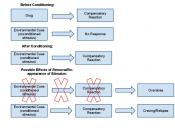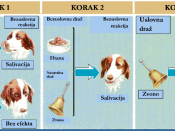A. Introduction
Perception is defined as the process by which an individual receives, selects, and interprets stimuli to form a meaningful and coherent picture of the world. Stimulus itself is defined as any unit of input to any of the senses (Schiffman, Bednall, Cowley, O'Cass, Watson, and Kanuk, 2001:148). So, perception not only occurs when we receive a stimulus by one of our five senses but it also relates to the view that that is developed as a result of the stimulus.
However, a person's reaction to stimuli and the perceptions that they form as a result of a stimulus often depends on past experiences and the expectations that they have built up as a result. For example, two people who see a McDonald's advert may react to it in very different ways. If a person has had a good experience with a McDonald's meal then it is likely that they will think of this pleasurable experience when they see something that they associate with McDonald's, for example the 'big M' logo.
This is because of 'classical conditioning', as people have learnt to associate the logo of McDonald's with a pleasurable meal (Schiffman et al, 2001: 233). If, however, a consumer had ever suffered food poisoning from McDonald's then they would not react to the sight of the McDonald's trademark in the same way, since the logo would remind them of their previous negative experience.
Just like McDonald's with their 'big M' logo, usually, marketers (for example: marketing managers) are already well aware of the way the consumer's mind detects products and they know that consumers are easier to detect something that can be seen or heard. This is why almost every consumer product has a logo, catchphrase or advertising jingle. Through repetition in advertising and the media, consumers are...



Niiiice
i must say that i like penis' you think that might be gay, but really its actually pretty damn cool, if anyone is interested in finding out more about penis' related to being gay. please call 666-6969
0 out of 0 people found this comment useful.